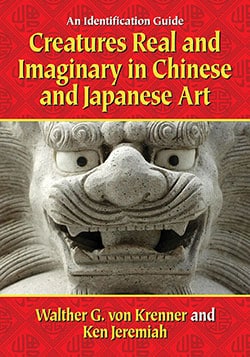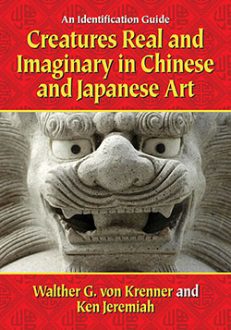Creatures Real and Imaginary in Chinese and Japanese Art
An Identification Guide
$29.95
In stock
About the Book
This guide to identifying lions, unicorns and other creatures real and fanciful in Chinese and Japanese artwork explains how these and other animal depictions were introduced to the East, and how their portrayals changed over time. Tracing the lion’s early use in Mesopotamian art and its cultural symbolism in Greece and Rome, this study includes stylized foxes, tigers, badgers and cats, as well as fanciful creatures like dragons, humanoid birds, water imps, demons and other chimerical beasts. Stories and descriptions are provided along with numerous photographs and drawings, making this work an invaluable resource for art collectors and anyone interested in East Asian culture and history.
About the Author(s)
Bibliographic Details
Walther G. von Krenner and Ken Jeremiah
Format: softcover (7 x 10)
Pages: 180
Bibliographic Info: 84 photos & illustrations (30 in color), appendices, notes, bibliography, index
Copyright Date: 2015
pISBN: 978-0-7864-9728-7
eISBN: 978-1-4766-1958-3
Imprint: McFarland
Table of Contents
Preface 1
Introduction 3
Part I: The Lion in Worldwide Cultures 9
Part II: The Lion in China 28
Between pages 38 and 39 are 8 plates with 16 color images
Part III: The Ch’i-lin (Qilin) or Unicorn 39
Part IV: Other Pi-Hsieh (Fabulous Animals) 54
Part V: The Lion in Japan 68
Part VI: Other Mammals 88
Between pages 98 and 99 are 8 plates with 14 color images
Part VII: Humanoid Creatures and Other Types of Yokai 104
Conclusion 126
Appendix A: Chinese Dynasties 129
Appendix B: A Chronological Outline of Japanese History 133
Appendix C: Edo Period Eras (1600–1867) 140
Appendix D: The Lion Design in Asia 141
Notes 143
Bibliography 147
Index 151





